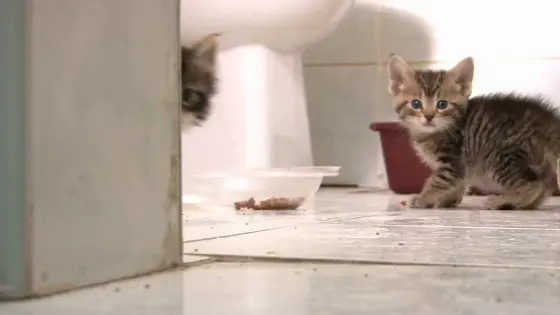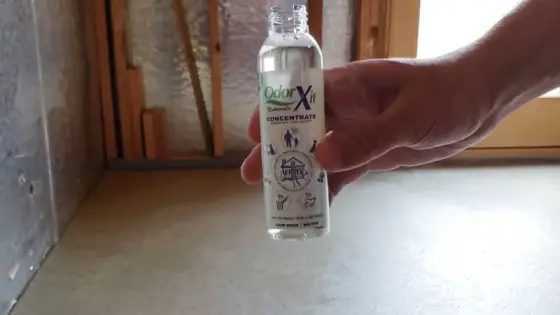Your concrete floors have served you well over the years, providing a sturdy and reliable foundation for your home. But when your feline friend decides to mark their territory, the once-durable surface can quickly become ruined and unsanitary.
The pungent odor of cat urine can linger for weeks and, if left untreated, can even lead to structural damage. However, with the right tools and knowledge, you can protect your concrete floors from the onslaught of cat urine.
To protect your concrete from cat urine, thoroughly clean the surface with water. Afterward, choose a suitable sealer for your needs. Be sure to prepare the area for sealing by removing debris or loose material, then apply the sealer consistently and evenly.
Today, we will guide you through the step-by-step process of sealing your concrete from cat urine. We will also explain why it’s essential. So, let’s get started!
How to Seal Concrete From Cat Urine? – Step-by-Step Procedures

STEP 1. Clean the Concrete Surface
STEP 2. Choose a Suitable Sealer
STEP 3. Prepare the Area
STEP 4. Apply the Sealer
STEP 5. Allow for Drying and Curing
STEP 6. Apply Additional Coats (Optional)
STEP 7. Maintain the Sealed Surface
If you’re dealing with cat urine on your concrete surface, don’t worry; sealing the area is possible with some preparation. Here are the steps to follow:
STEP 1. Clean the Concrete Surface
To ensure your concrete flooring is protected from cat urine, start by cleaning the affected area. You can use a mild detergent or enzymatic cleaner to remove pet stains and odors.
Scrub the surface thoroughly with a brush to remove all urine and odor. Rinse the surface with water and let it dry completely before proceeding to the next step.
STEP 2. Choose a Suitable Sealer
After cleaning the concrete surface, choose a suitable sealer to prevent cat urine from penetrating the surface. A high-quality sealer will create a barrier on the surface, preventing urine from seeping into the concrete.
Penetrating sealers provide a barrier and allow concrete to breathe, preventing moisture buildup that could cause cracking. Not all sealers are created equal, and some may not be suitable for use on concrete surfaces.
Look for a sealer specifically designed for concrete, as this will provide the best protection against cat urine and other potential hazards.
STEP 3. Prepare the Area
Before applying the protective barrier, clear the space and cover any nearby items to ensure they’re not affected by the sealer. Start by removing any furniture or objects on the concrete surface. This will give you ample space to work with and prevent obstructions during sealing.
Next, cover any nearby surfaces or items you want to protect from the sealer. This’ll help prevent any unwanted spillage or splatters that may damage your belongings.
STEP 4. Apply the Sealer
Now it’s time to protect your concrete surface from any potential damage caused by pets. Follow the manufacturer’s instructions on the sealer’s packaging for proper application.
Typically, you’ll pour the sealer into a paint tray or use a sprayer. Start from one corner and work across the concrete, applying an even coat of sealer. Be sure to use a roller or a brush to spread the sealer uniformly.
Remember, the sealer will act as a barrier between your concrete and any potential damage caused by your pets. This means you won’t have to worry about stains or odors from cat urine.
STEP 5. Allow for Drying and Curing
Take the time to ensure the sealer is fully dry and cured before allowing any pets or foot traffic on the protected surface. Although the manufacturer’s recommendation depends on the product and environment, allowing the sealer to dry completely is crucial.
This is because allowing the sealer to dry properly will help ensure a long-lasting barrier against potential damage caused by cat urine.
STEP 6. Apply Additional Coats (Optional)
Adding additional coats of sealer can provide better protection against potential damage, just as adding more layers of frosting to a cake. Don’t follow the manufacturer’s instructions, and allow each coat to dry completely before adding the next.
It’s always better to avoid caution when protecting your concrete blocks from cat urine. So, if the sealer manufacturer recommends additional coats, take their advice and apply them accordingly.
STEP 7. Maintain the Sealed Surface
Keep your newly protected surface looking great by regularly cleaning it with pet-friendly cleaners. This will help maintain the seal and prevent damage from harsh chemicals.
How does cat urine affect concrete?

The uric acid crystals in feline pee are notorious for their ability to bind tightly to surfaces, particularly concrete. Even after multiple cleanings, these crystals can persist and emit a pungent gas when moisture is introduced, causing ongoing odor issues.
This is due to the formation of uric acid salts within the crystals, which can re-form and release the gas upon contact with moisture. If left untreated, the smell of cat urine can become overwhelming and difficult to manage.
It can also lead to the deterioration of the concrete surface, ultimately compromising its structural integrity. This is why take proactive measures to seal concrete from cat urine.
What is the best concrete sealer for cat urine?
When cleaning up cat urine from concrete, use the best products available. A concrete sealer that is odorless, chemically reactive, water-based, silicone, and provides long-lasting protection without changing the surface’s appearance. You don’t have to worry about it turning yellow or making a slippery surface.
These sealers penetrate the concrete’s surface and create a barrier that prevents urine from seeping in and damaging the concrete. Consider concrete sealers that the pros use if you have persistent cat urine odors or stains.
Some enzymatic cleaners break down chemicals like acids in cat urine using bacteria and enzymes. These cleaners can be particularly valuable for homeowners with stains or stubborn smells.
How do you neutralize urine odor on concrete?
To eliminate the smell of urine on your garage floor, mix TSP (tri-sodium phosphate) with water and scrub the solution onto the affected area. This is an effective method to neutralize the odor because TSP is a powerful cleaning agent that can break down the urine molecules and remove the smell.
Also, TSP is safe to use on concrete surfaces and can remove any stains left behind by urine. Remember that TSP is a heavy-duty cleaner, so wearing chemical-resistant gloves is important. After scrubbing the affected area, rinse it thoroughly with water and allow it to dry completely.
Will vinegar remove the cat urine smell from concrete?
Using vinegar is an effective solution to completely eliminate the unpleasant urine odor from any area of your concrete floor. Vinegar is a natural and safe way to neutralize the odor-causing bacteria responsible for the unpleasant smell.
Here are some important things to consider when using vinegar to remove urine smell from concrete:
- Apply full-strength vinegar to the affected area of the concrete floor. It’s important to use full-strength vinegar because diluted vinegar may not be strong enough to remove the odor completely.
- Let the vinegar dry completely. This can take up to a few hours, so be patient and avoid walking on the area until the vinegar has completely dried.
- Repeat the process until the urine odor has dissipated. Depending on the severity of the odor, you may need to repeat the process a few times to eliminate the smell completely.
Seal Your Concrete Surfaces Against Cat Urine for a Fresh and Clean Home

To maintain your home’s cleanliness and freshness, ensure your concrete surfaces are sealed against cat urine. Following the steps outlined in this blog post, you can protect your concrete surfaces from cat urine stains and odors.
Remember to choose a suitable sealer, apply it properly, and maintain the sealed surface. Doing so gives you peace of mind knowing that your concrete surfaces are well-protected.
Don’t let the suspense of whether your cat will pee on your concrete keep you up at night. Instead, be prepared and take action as soon as possible. So, go forth and enjoy your clean and protected concrete.
